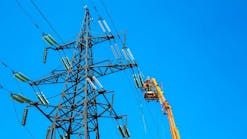What will the electric grid be like in 2050? Will central station power plants dominate? Will distributed energy resources penetrate? Will transmission be needed? Will distribution be smart? Will electricity be affordable? Too often, we envision the grid’s future in a top-down manner. Let’s look bottom-up from a customer’s view, which is the best reality check for any business and its future.
Customers in 2050 will be smarter, more discerning and will not tolerate today’s level of outages and power quality. They will not dedicate greater budget for electricity without greater value.
The 2050 customer in a maturing digital age will pursue universal power supply with added choices such as distributed energy resources (DERs) with an energy storage or a micro-grid option. Energy choices with the market reach of the grid will mitigate rising prices and help ensure supply reliability.
Most 2050 customers will continue to find value with a grid connection. The grid connection may be a fixed charge, with a separate energy-consumption charge, but additional service packages may develop to provide more sophisticated energy solutions.
Efficiency in 2050 for appliances, heating/cooling systems, hot water heaters and other end-use devices may be bundled and interface with supply and market choices. Multiple dc-ac electricity conversions at the customer level may result in internal customer dc networks in parallel with ac networks to gain greater efficiencies, particularly in larger customer settings.
In the U.S. Energy Information Administration’s (EIA’s) "2014 Annual Energy Outlook" report, the potential for additional uses of electricity over other forms of energy are cited to increase demand through 2040 and beyond.
Although per capita energy use may decline per EIA’s report, population will increase, and a stronger economy might well yield greater demand. If electricity in a prosperous society is viewed as a comfort rather than a commodity, even greater use may occur.
From a customer supply perspective, central station energy resources will continue to hold a strong position with greater DER penetration. Both regulated and unregulated players will develop various business models for DERs. Critical for the supply side are interconnection standards that allow all resources, including DERs, to ride through grid technical issues, to regulate grid interface attributes (for example, voltage), and to communicate seamlessly with grid operators and marketers.
Energy storage, at the grid level and customer level, will be the breakthrough that transforms today’s low-load factor grid to provide greater utilization levels by 2050. Wind and solar resources will be made more effective. Energy storage also will unlock greater operational and economic value for rooftop solar panels, making them affordable (without subsidy) with greater value from aggregation in the broader marketplace.
Transmission will advance to enable the choices of supply and market reach. Although some see DERs as the death of transmission, it is quite the reverse. Transmission enables market reach across many states for aggregators and customers. A DER may achieve a better price point (or lease arrangement) if a customer or aggregator can use it in a greater marketplace, especially enabled by energy storage.
Transmission will also enable fuel transformation in the U.S. Per EIA’s report, central station energy resources will remain a strong player through mid-century enabled by transmission. Energy from coal will be surpassed by natural gas in 2035, or probably a decade sooner given the recently announced environmental regulations. Renewable energy will grow over 3% annually, with solar growing over 7% annually.
Distribution will advance in visibility, control and network ability. Grid operators at the distribution level will emerge to interface with transmission grid operators and markets. Demand response will lose its limited definition, and customers will be able to engage fully as market players, helping to achieve better affordability of electricity. A next-generation grid operating system at the distribution level will be needed to interface seamlessly with a next-generation energy management system run by transmission grid operators.
The explosion of controllable grid elements and market players by 2050 will challenge today’s grid operating systems, calling for millisecond-level operational controls beyond human interaction ability. The glue will be a reliable, robust, interconnected, transparent, resilient and secure transmission grid, seamlessly connected to transformed distribution networks that smartly interact with customers and their systems.
Grid 2050 will be foundational to the economy. Winning business models will lead the transformation. Losing business models will be nostalgically yearning for incandescence.

